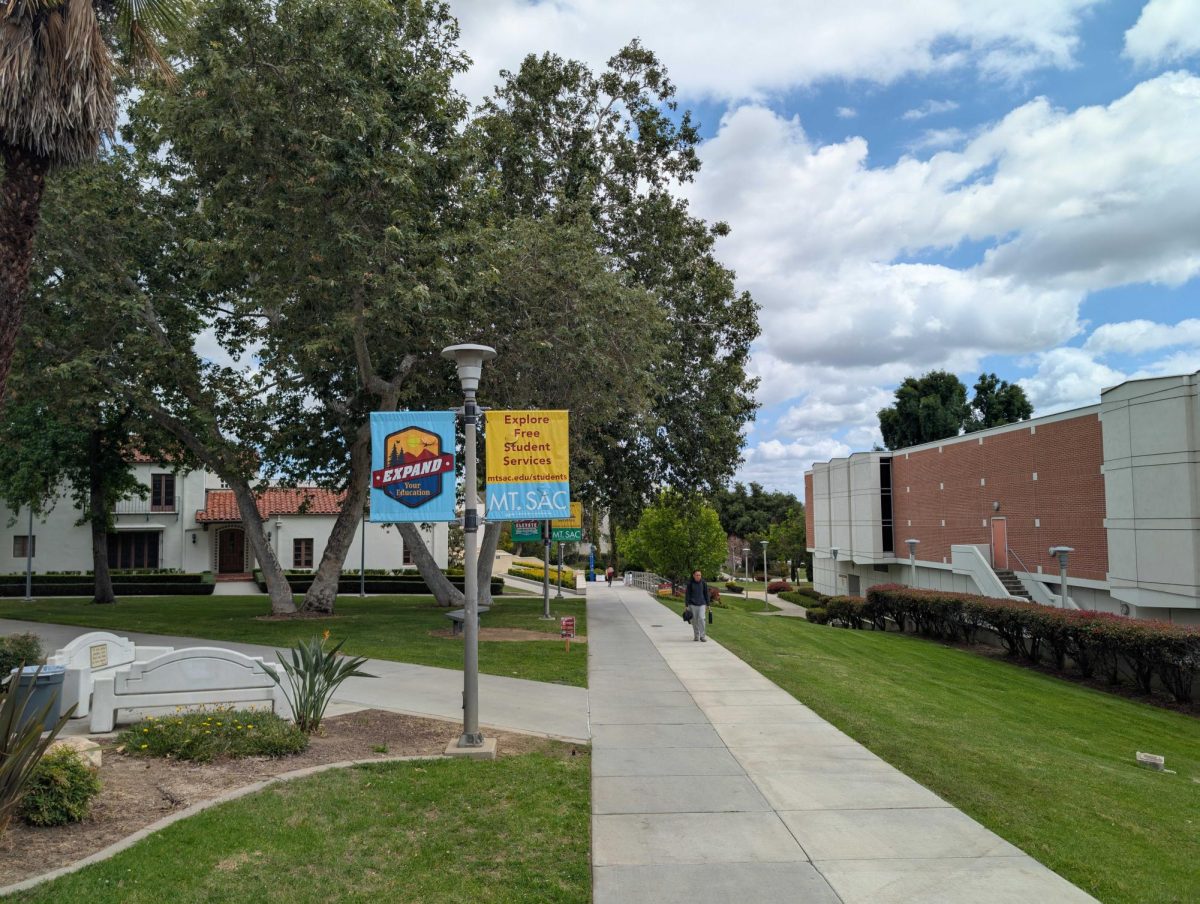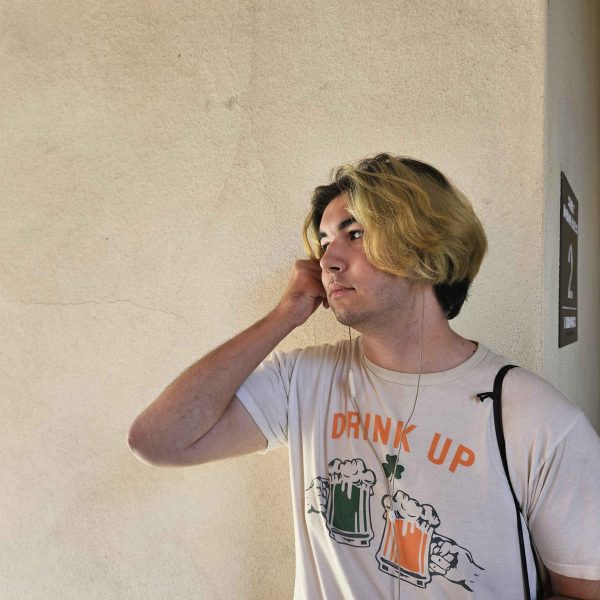As the Trump administration continues to march forward, students enrolled in schools and colleges across the U.S. now fear that inclusionary programs considered DEI, are at risk of abolishment.
DEI or Diversity, Equity and Inclusion, are blueprints meant to promote fair treatment of individuals who belong to underrepresented communities. It’s meant to restrict discrimination based on gender, race and disability. Mt. SAC’s version of this is called DEISAA+ or Diversity, Equity, Inclusion, Social Justice, Anti- Racism, + Anti-Other isms.
Under the Trump Administration, the government has taken action to abolish DEI and all adjacent programs. On January 23, President Trump signed an executive order that ruled DEI initiatives would restore the “original” hiring requirements that didn’t consider the disadvantages of individuals belonging to underserved communities. It deemed that job hiring would now be fair and equal for everyone, insinuating that DEI initiatives are harmful to white individuals.
When it comes to DEI in education, Trump has claimed that DEI programs are harmful to white students. On April 4, the U.S Department of Education sent a letter to state leaders where they stated that Title I funding, which is offered to schools with a high population of low-income students, would be threatened if schools failed to remove DEI initiatives. Schools across the U.S. had 10 days to follow these guidelines or risk losing funding.
The state of California responded to the administration’s threats to cut funding over DEI initiatives by informing schools within the state that there is no need to respond to said threats. This pushback is in collaboration with other democratic-led states including Minnesota, Vermont and New York with Chicago’s mayor echoing the same resistance.
Mt. SAC’s leadership says it remains committed to its DEISAA+ goals, including Mt. SAC 2035, the 10-year blueprint for the college. The website states they’ll analyze data from a demographic perspective to confront inequities present in policies and practices and engage with people from campus to understand what’s working and what isn’t.
“We have not changed anything on this campus,” Mt. SAC President Martha Garcia said during the April 9 President’s Forum. “And as far as our wording, as far as our commitment, we have not changed that. Until we are legally required to, I don’t plan to. Our values remain the same.”
According to Vice President of Student Services Melba Castro, Mt. SAC has tried to embed DEI throughout the campus to combat racism and other discrimination in order to protect its students, make them feel valued and help close achievement gaps.
While there are a number of programs that are more specialized for certain demographics, virtually the entirety of the campus includes some facet of DEI, so identifying and eliminating DEI would be virtually impossible without a legal definition, which has yet to be established.
While some colleges are pre-emptively making changes to adhere to new policies, currently, Mt. SAC isn’t planning on cutting any programs or services until legally obligated to do so. The school is waiting on the results of legal challenges California officials have made against Trump’s executive orders before proceeding with modifications.
Castro added that the school has yet to see any impact on funding.
If funding were to be cut, the school is already looking at ways to support the staff members and students. Castro said the college would find a way to absorb the salary of full-time employees so they can remain employed.
“We are standing strong,” Castro added. “We are supporting students, we have not made any changes to the programs. We have an overall commitment to supporting all of our diverse students, faculty, and community members.”
Ryan Wilson, director for Equal Employment Opportunity and Title IX, is responsible for dealing with concerns related to discrimination, harassment or retaliation on campus for both students and staff. Wilson said that as of right now, nothing would change in the Human Resource department unless they are legally required to because a lot of what they do is under California state law rather than federal law.
Funding for Mt. SAC comes from a mix of federal, state and local sources. According to the Fiscal Department, “Mt. SAC’s primary source of revenue comes from a combination of property taxes, enrollment fees, state apportionment, and the Education Protection Account (EPA), which equals Mt. SAC’s total available revenue.”
The adopted budget for 2024-2025 reflects a nearly $5.6 million deficit, placing financial strain on the college. Looking ahead, the state anticipates additional budget shortfalls for the 2025-2026 fiscal year, which are expected to further impact community colleges like Mt. SAC.
In addition, potential cuts to federal funding, should the college fail to meet regulations related to DEI, could result in even greater losses, affecting programs, services and employee salaries.
For the 2024–2025 fiscal year, Mt. SAC had adopted a combined budget of over $295 million. This is an an increase of just under $16 million from last year’s adopted budget. However, regardless of the increase in general funding, the school now has an ongoing budget deficit of nearly $2.6 million for the current year. Additionally, there is currently no information for the 2025-2026 fiscal year.
There is a difference between a tentative and adopted budget. According to Fiscal Services, the tentative budget has to be approved by July 1. It serves as a rough draft for the financial plan based on what it knows and it is necessary to make certain things continue to run smoothly at the start of the fiscal year. The adopted budget that has to be finalized by September 15 and includes actual state funding and overall local revenue data.
“This version is more detailed and reflects actual funding levels, revised priorities, and finalized plans for how the college will spend its money,” according to Mt. SAC’s Fiscal Services.
Afterward, the process is summarized in the California Education Code (California Ed Code § 58305,) and explained to a greater extent in the California Community College Chancellor’s Office, Budget and Accounting Manual (BAM). It is used statewide by other community colleges. Overall, the tentative budget gets the college to pass by the start of the year using the best information available and the adopted budget is the official updated plan based on confirmed data.
Mt. SAC has allotted $200,000 specifically for DEISAA+ for the 2024-2025 academic year, which comes from state funding. Programs and services that fall under that funding source may be safe given that it comes from outside federal sources.
How much Mt. SAC is at risk to lose from the federal government remains uncertain, but given that DEI is embedded in nearly every aspect of the college, making revisions would be a systemic uprooting–a nearly impossible task. Just how much change is required to adhere to new regulations has yet to be defined.
“My hope is that colleges will continue to push these DEI initiatives and support them. But definitely seeing how much money organizations and government organizations have been pulling back from them is very concerning to me. So it would be my hope that it would not move into the college and university space,” Mt. SAC biology professor Sarah MacLean said.
On the report of Mt. SAC’s 2024-25 budget, Governor Newsom approved the new California State budget on June 26, 2024, that budgeted to the total of $298 billion. This is a reduction of 4.2% than last year’s $311 billion budget.
The State General Fund that is used to help finance matters such as education, healthcare and security also had a decline. It’s one of the most important parts of the budget, now budgeting to $211.5 billion, making it about 6.4% lower than last year.
The cuts in budget are happening because not as much money from taxes was collected by the state. This then resulted in a big budget gap of $45 billion.
Across the country, a number of universities have scaled back or eliminated their DEI programs, positions and initiatives in response to growing political pressure and concerns over potential loss of federal funding. This includes universities in states like Florida and Texas, as well as Ohio State University and the University of Michigan. Even some community colleges, like those in the Virginia Community College System, have followed suit. Harvard University stands out as one of the most high profile institutions to resist the new regulations. California continues to face pressure as the Trump administration launches investigations in several institutions.
Responses from colleges near Mt. SAC vary but most are committed in assuring that their focus is on the students and what benefits them.
The California Community College Chancellor’s Office is working to keep DEI in community colleges across the state. The CCCCO is working to implement Vision 2030 which focuses on the students and future learners impacted by increasing income inequality and poverty such as veterans, people with low incomes, K-12 dual-enrollment students, foster youth and students who are justice involved/impacted.
Surrounding community colleges are likely waiting, like Mt. SAC, to see the outcome of the pending litigation against the Trump administration’s DEI mandates. So far, their respective websites continue to reflect a commitment to DEI initiatives, and their campus communications remain supportive, for now.
According to the Chaffey College equity page, “We recognize that Chaffey College students come from diverse backgrounds and all walks of life. The Office of Equity Programs & Student Engagement exists to provide a variety of support programs and resources to help meet the needs of the whole student. Whatever your background, identity or status, we are here to support you and help you make the most of your student experience at Chaffey College.”
Fullerton College’s diversity advisory committee is working with the campus community to create and assess effective policies and programs that promote diversity, inclusivity, and equity and said it will continue to do so in the coming years.
Citrus College in Glendora has a similar outlook to continue supporting their students as well. The Diversity, Equity, Inclusion, and Accessibility+ Committee is working to understand how as an institution, Citrus can actively identify and eliminate structural racism and bias within the college.
Outside of community colleges within the state, UCs and Cal States are also at the forefront of the question surrounding the future of DEI on college campuses. The UC has not stated whether they plan to scale back or eliminate DEI efforts, but have stated to remain fully committed to “equal opportunity and broad participation in its education, employment, and contracting opportunities in compliance with Article 1, Section 31 of the California Constitution, which prohibits the University from discrimination or preference based on race, sex, color, ethnicity or national origin.”
As stated by the Daily Bruin, as the UC continues to face pressure from the possibility of losing funding, the UC president Michael Drake, has eliminated DEI from their hiring process and has removed the requirement for diversity statements in faculty recruitment.
The California State University system is also making an effort to navigate federal pressure to dismantle DEI initiatives.
Although some reports suggest that CSUs are considering making changes to their DEI programs, such as renaming or restructuring certain offices, they are not broadly eliminating DEI efforts. All campuses continue to offer DEI services and are instead focusing on improving these programs to elevate impact and efficiency as all of their websites continue to have a DEI page available despite the fear some officials have with the possibility of federal funds being frozen according to a recent report from the Sacramento Bee.
Some private universities in the area have both revisited or reduced their DEI programs, while others have left their initiatives in place.
The University of La Verne as well as Azusa Pacific University have not shown any efforts in actively rolling back on their DEI programs, but instead have continued to offer support for all of their students.
APU’s website states, “As an evangelical Christian community of disciples and scholars, Azusa Pacific University approaches diversity from a biblical perspective, affirming that diversity is an expression of God’s image, love, and boundless creativity.”
On the other hand, USC has eliminated DEI and has announced that it’s no longer using the term “Diversity, Equity and Inclusion,” citing “disagreements” surrounding the phrase and its interpretations. Instead, the university said it’s “broadening” the initiative by naming it “community” to comply with the Department of Education’s federal guidance on DEI according to a letter written to students.
USC’s letter to students and staffers acknowledged the federal guidance while highlighting its “commitment to diversity in thoughts and background.” According to the March 27 statement released by the USC Office of the Senior Vice President of Human Resources, the term DEI has “increasingly become embroiled in broader cultural and political disagreements,” and “‘community’ better captures the breadth of our purpose and mission.”
USC has since removed its office of inclusion and diversity website and has redirected it to the USC Culture Journey website.
California schools and universities are carefully navigating the potential impact of federal actions while remaining committed to supporting their students, says EdSource. Additionally, California schools and state agencies remain committed to upholding DEI initiatives and legal protections, even amid possible challenges at the federal level.
Mt. SAC has expressed a pro-DEI approach to education. Students surveyed indicated that while they weren’t well-versed in the specifics of DEI at the college or even on a national level, they felt that there was no harm in maintaining these initiatives.
“I can’t speak to things on a higher level,” Brissa Torres said, a 22-year- old neurobiology major. “That being said, I don’t think there’s a need for removal, it wasn’t doing any harm. It genuinely doesn’t make sense to me.”
However, some students had a much more apathetic take on the subject.
“I think it is very unfortunate for those who are a part of those groups, however we cannot override the president’s order, therefore we will need to abide by those orders, and those who are apart of those groups will have to deal with it one way or another regardless of their feelings and move on,” Lizette Guzman 19, dental hygiene major said.
Another student, 21 year-old Briana Solano, an 21, architecture major, echoed Guzman’s sentiments. “It’s unfair what’s happening because a lot of people that rely on these programs are worried how they’re going to be affected when they should just be focused on their schoolwork now rather than if they’re going to be able to finish their school in the future without these programs,” she said.
As funding threats loom, Mt. SAC along with other California colleges remain steadfast in their commitment to DEI, choosing to uphold values of equity and inclusion until legally forced to do otherwise. The future of these programs remains uncertain, but for now, institutions are standing their ground in support of their diverse student communities.






